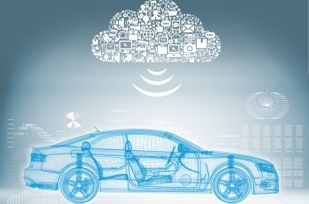Executives from some car makers including BMW and Ford have no intention of allowing their vehicles to become Apple or Google’s latest device, and plan to keep ownership of their centre consoles.
Smart Device Link (SDL), the content integration standard sponsored by Ford, provides auto makers with a standard delivery model to make infotainment quick and easy to deploy.
One IoT company, however, claims there’s an advantage in using its Choreo platform with SDL to offer a broader content portfolio with more than 40 apps, allow configurability by car make, model and regional, and provide on-demand, over-the-air (OTA) software updates. Jeremy Cowan talks to Airbiquity’s chief revenue officer, David Jumpa.
IoT Now: BMW and Ford plan to retain ‘ownership’ of their centre consoles. How are other car makers reacting?
David Jumpa, Airbiquity: The majority of automakers in the US and Europe have invested in and deployed branded connected car systems such as Nissan’s NissanConnect and (Fiat Chrysler Autos) FCA’s Uconnect to provide connected car services like safety and security, call centre and concierge, and mapping and navigation in addition to infotainment delivery.
When it comes to infotainment specifically, according to SBD’s Automotive App Guide, approximately 50% of automakers have or are planning to deploy both Apple CarPlay and Google Android Auto. So the majority of automakers with branded connected car systems aren’t giving up ownership of their centre consoles to Apple and Google, but are choosing to compromise on the degree of brand association with the infotainment component of their connected car systems – and the in-vehicle user experiences associated with it.
IoT Now: Will manufacturers who don’t incorporate Apple and Google in their products be at a disadvantage down the road if Apple and Google become industry standards?
DJ: As I said, Apple CarPlay and Google Android Auto are receiving widespread automaker adoption that could lead to the establishment of a de facto industry standard. However, it’s important to note that the Apple and Google systems are actually based on proprietary projection integration approaches that don’t use open industry standards, and afford little to no automaker content control and service management.
Current automaker interest in open standard options like SDL is evidence of market demand for alternatives that can offer access to additional apps and service management control. And when you step back and look at what’s happening in the market today most automakers are placing more than one infotainment bet by deploying “multi-stack” systems with Apple, Google, open standard options like SDL and MirrorLink, and in some cases customised proprietary integrations.
It will be interesting to see how this all plays out over the next 3-10 years as Apple and Google move closer to building and selling their own vehicles.
IoT Now: What is Airbiquity’s response to this challenge for the car industry?
DJ: Infotainment is definitely here to stay, and every automaker needs to decide their strategic approach for infotainment content integration balancing the impacts to cost of delivery and competitive differentiation. If the industry challenge is addressing the need for simplifying infotainment integration and lowering cost of delivery, Airbiquity’s response is the recent expansion of our infotainment integration options to include standard based approaches like SDL and projection.

Airbiquity now has the technology and technical expertise to support the full range of infotainment integration options that our customers may be interested in pursuing, in addition to providing access to our managed content portfolio of high quality global and regional apps, Choreo platform back-end application and policy management features, and over-the-air (OTA) software update capability. We’re even willing to support Apple and Google deployments in the future with our unique service management capabilities if they ever decide to open their system APIs.
Having said this, let’s talk for a moment about the challenge coming after infotainment, which is enabling driving-centric services. Infotainment is basically an extension of the mobile handset world into the car, and was not specifically designed for automotive. Driving-centric services are different because they will be specifically designed for automotive to enhance the vehicle ownership and driving experience.
An example is a service that enables vehicles to proactively recommend alternatives to a daily commute that optimise fuel consumption, lower CO2 emissions, reduce engine wear, and avoid real-time road hazards. These services will be closely tied to automaker brands, managed ecosystems, and integrate with vehicle components and sensors to access the necessary data to fuel the analytics powering the services.
Driving-centric services represent a massive opportunity for automakers to increase consumer engagement with their brands and vehicles while also serving to differentiate themselves from competitors. Airbiquity’s driving-centric services offering is called “Intelligent Vehicle” and enables automakers to take their connected car services to a whole new level.
IoT Now: Is there a cost advantage in using Airbiquity’s SDL solution?
DJ: SDL promises to reduce implementation complexity while increasing access to infotainment content, but also presents a few trade-offs relative to other approaches such as reduced cloud-based content management, minimised content policy management, and an inability to perform on-demand over-the-air (OTA) software updates.
Airbiquity’s SDL solution is unique because it mitigates these trade-offs by leveraging the unique service management features of our Choreo service delivery platform. As a result, Airbiquity provides automakers with access to a managed portfolio of over 40 high quality global and regional SDL-compatible apps with enhanced features and functionality, robust back-end application management and policy controls, and over-the-air (OTA) software updates. This adds up to incremental value when it comes to SDL deployments versus our competitors.
IoT Now: How can you ensure that app developers format their apps for this platform?
DJ: Content providers develop apps for platforms that let them reach the largest connected car audiences while factoring in the ability to control their brand, support their most used features, and manage their development costs. Airbiquity has over five years of experience integrating infotainment content into automotive programs, a fully deployed service delivery platform supporting over six million vehicles across 60 countries. We also provide developer tools to assist with content integration. This is a very attractive combination of assets and capabilities in today’s infotainment service delivery marketplace.
IoT Now: Is this purely an infotainment issue, or does it have wider implications for vehicle-to-vehicle connectivity, management connections with OEMs, smart cities, and transport?
 DJ: We think it’s about much more than infotainment. Why? It’s our belief that connected car programs and services will increasingly contribute to consumer purchase consideration and preference like vehicle designs, drivetrains, and interiors do today. As the industry moves toward more sophisticated connectivity and data-enabled use cases and transportation models like driving-centric services, ride sharing, V2X (vehicle-to-any communications), and truly autonomous vehicles new user interfaces and apps will be created that are strategically integrated with customer information, sales and service, dealer channels, CRM, and extended ecosystems that are tightly branded and increasingly monetised.
DJ: We think it’s about much more than infotainment. Why? It’s our belief that connected car programs and services will increasingly contribute to consumer purchase consideration and preference like vehicle designs, drivetrains, and interiors do today. As the industry moves toward more sophisticated connectivity and data-enabled use cases and transportation models like driving-centric services, ride sharing, V2X (vehicle-to-any communications), and truly autonomous vehicles new user interfaces and apps will be created that are strategically integrated with customer information, sales and service, dealer channels, CRM, and extended ecosystems that are tightly branded and increasingly monetised.
The business opportunities associated with the evolution of connected car beyond infotainment are exponentially larger for automakers than providing consumers with in-vehicle access to popular social media channels and streaming music services.
IoT Now: Thanks, David.
The author of this blog is Jeremy Cowan, editorial director of IoT Now
Comment on this article below or via Twitter: @IoTNow_ OR @jcIoTnow










